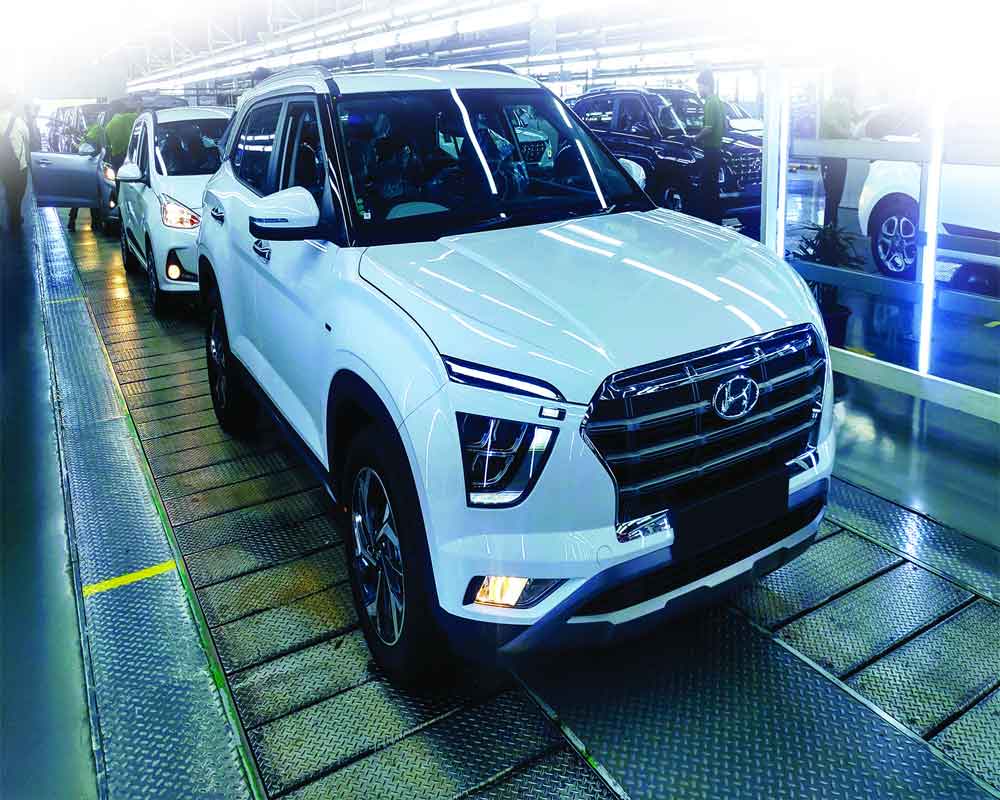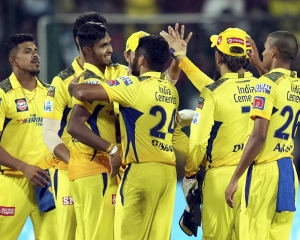The Hyundai factory lies around 90 minutes outside downtown Chennai, when ground on the factory was broken in 1996 with operations starting in 1997, no-one could have predicted the immense success that the Korean carmaker would go on to enjoy in India. In the 23 years of operation, Hyundai India’s assembly plants in Chennai have manufactured over nine million cars. If all the steel coils used in manufacturing all those cars were unfurled, they would go around the equator four times over, Ganesh Mani S, Director, Production, Hyundai Motor India Limited tells me. With two assembly plants and three engine plants on the premises today, Hyundai India can make 750,000 cars a year, “We manufacture 17 different cars in over 350 different variants and export vehicles to over 100 countries”, he adds.
With 650 fourth-generation robots and 13,000 employees, the factory works twenty-four hours a day, six days a week, totalling 295 days a year. Even when the factory is rolling cars out, a car rolls off one of the several final assembly lines every 33 seconds, engineers and mechanics are servicing and repairing the robots and equipment, so much so that the in-house kitchens at the facility work around the clock without a single day off. At full-load, the kitchens produce 26,000 meals daily.
But, The Pioneer has been given unprecedented access inside the Hyundai facilities not to see the kitchens but how a car is made. More specifically, we have come to see how the second-generation of Hyundai’s bestselling compact Sports Utility Vehicle (SUV) the Creta is put together. The first-generation Hyundai Creta was a bonafide best-seller with the Chennai factory pleasing 663,817 customers in 78 countries to date. But production for the Indian market has shifted to the second-generation of the car. The new car that was showcased at the recently-held Auto Expo in Greater Noida is bigger than the outgoing model, features all-new BS6 engines including a 140PS 1.4 turbocharged petrol engine, also manufactured at Chennai, with this variant featuring steering mounted paddle-shifts for gears as well as a panoramic sunroof.
The process of manufacturing a car starts at the ‘Press Shop’. This has nothing to do with the media, but is where giant coils of automotive-grade steel are cut and then literally ‘pressed’ into shape by a huge amount of force, in the case of the roof panels on the all-new Creta a whopping 5400 tons of force is used. And not just any steel would do, the high-tensile, high-strength steel used actually means that the steel frame of the all-new Creta can support the weight of two full-grown African elephants. One roof panel emerges every 15 seconds from the press. There are three huge presses and each of them can be fitted with different dies for different parts. Each of the panels you see in a car is individually pressed, and the dyes are changed frequently depending on demand.
After the steel has been pressed into shape, they are stored in between the press shop and the second-stage of the process, the ‘Body Shop’. At Body Shop One, one of two at Hyundai’s facility, 220 robots do everything from manipulating the pressed metal parts to doing the critical spot welding and then a final robot even tests a random completed body shell for any defects. The robots manufacture bodyshells with a ridiculously low error rate and can do it repeatedly and fast, most bodyshells exhibit errors less than 1mm as compared to the 3D drawings, no matter it is a Santro or the all-new Creta. The dance of the robots as they get a car, is mesmerising but also has given Ganesh and his team at the factory to try out something new with big data. The robots at Hyundai’s facilities generate 11.7 billion data points every year, with better data management and algorithms in place, Ganesh told The Pioneer that they can now predict when a motor or a electro-welding gun is about to fail. “This has reduced downtime on these changes from about 40 minutes to under 17 minutes, a 100 percent plus improvement”, he says proudly. His work with data has won kudos from Hyundai Motors globally and the practice is being rolled out at other facilities as well.
After the body-shop, the empty shells go to the paint-shop. The paint is applied using electrostatic force to ensure an even finish. But we are not allowed inside the paint-shop as the chemicals and the low tolerance for dust means that few people are allowed inside any automotive paintshop. Instead we are taken to the Engine Shop 3, this is where Hyundai India is manufacturing the 1493cc (1.5 litre) four-cylinder U2 CRDi turbodiesel engine for the new Creta as well as the Verna. This 115PS engine has several changes compared to the previous generation, to make it BS6 capable including a new variable-geometry turbocharger, new catalysts and an higher-pressure fuel injector. These have not only reduced emissions, but have also improved the power output of the car.
Hyundai India remains bullish about diesel technology in the BS6 era despite other manufacturers exiting the segment. Again, much of the process of machining is automated, but employees assemble the various parts. The engine is tested using a cold-start system, which drastically reduces emissions inside the plant. And before the engine is sent to the plant, or often exported, a final robotic check, where a robot takes 45 photographs of various points of the engine and checks it against a database, all in just over a minute is done. The error rate is infintessibly small.
Finally, the car that you and I might call our own is ready to be put together. Hyundai has two assembly shops at Chennai, and the all-new Creta is being put together at the original line. There are three lines here, the first where the all-new Creta, and some first-generation cars for the export market and the Venue make up a a bulk of the models. This line has an output of 45 cars every hour, each car visiting almost one hundred different stations. But how do employees differentiate between different cars, since the Hyundai factory produces over 350 different variants and employees can easily be moved from one station to the next?
“We use computer simulation to ensure that everyone on the line knows his or her role. Electronic tablets give them a quick reference to what they have to do, and our parts management system ensures that they only receive the parts specific to the product in front of them”, Ganesh points out. The computer simulation ensured that everyone on the final assembly line knew exactly how to put together the all-new Creta even before the first one rolled off the line. Hyundai is anticipating heavy demand for the all-new Creta, thus every second vehicle on this assembly line is the new model.
The first thing workers do on the line is actually remove the doors on the vehicles. This is to ensure easy access to the inside as well as prevent inadvertent damage and scratches to the paint job. The doors, where the windows and speakers are fitted are actually finished on a separate line and Hyundai’s computer systems ensure that they perfectly meet their vehicle back a few stations down the line. Hyundai employees use gravity-assisting devices to help them manipulate heavy components such as the central console and tires. The factory is a perfect example of Henry Ford’s moving assembly line concept. The line is constantly moving, with each station knowing exactly what to do, it is almost perfect symmetry, a carefully choreographed dance that would make Bollywood, rather given where we are Kollywood, jealous.
After this, the cars undergo a pre-delivery check. In 800 seconds, twenty Hyundai India employees check everything on a 150-point checklist. From the interiors including the infotainment system, the horn, lights and the exteriors for any possible scratches under a brightly lit tunnel, to ensure that the car is dispatched to dealers with no flaws whatsoever. Again, a carefully choreographed dance ensures that the car that you might call your own one day, maybe the all-new Creta in this case is as good as it possibly can be as Hyundai India’s factory at Sriperumbudur assures both buyers in India and across the world that it is one of the best car manufacturing facilities anywhere in the world. Making this a ‘Make In India’ success story and while Indian buyers will enjoy the all-new Creta with its stunning new features before other buyers, it will will soon be sent to markets across the world.


























